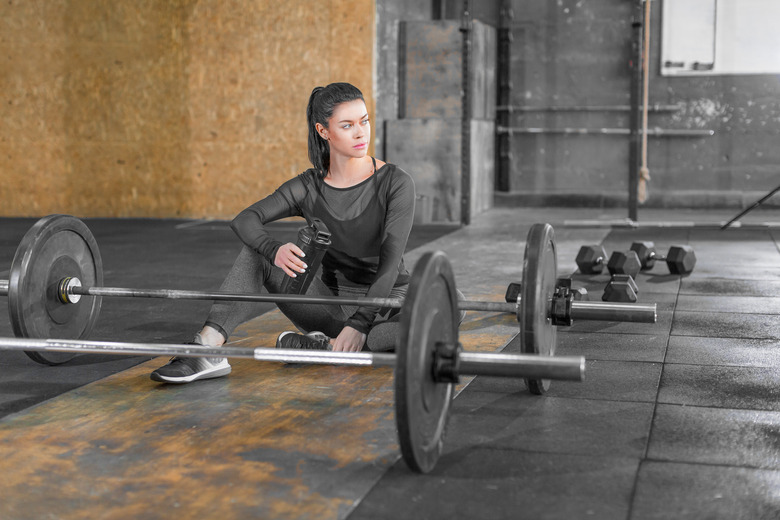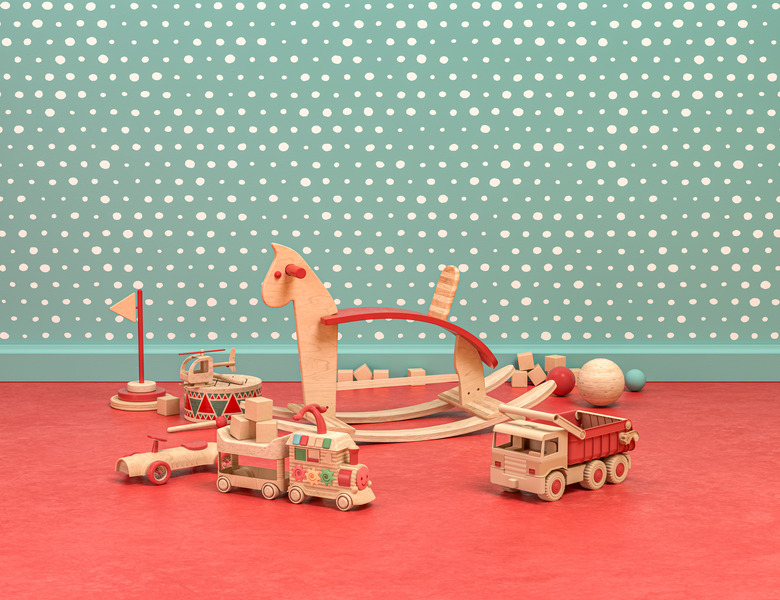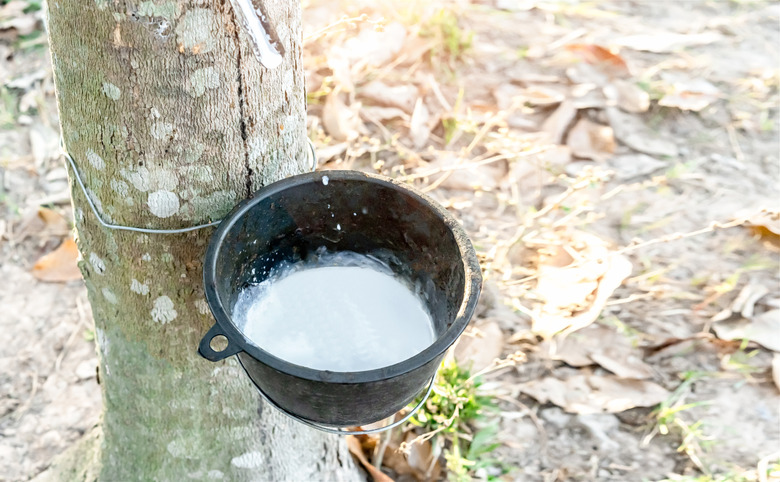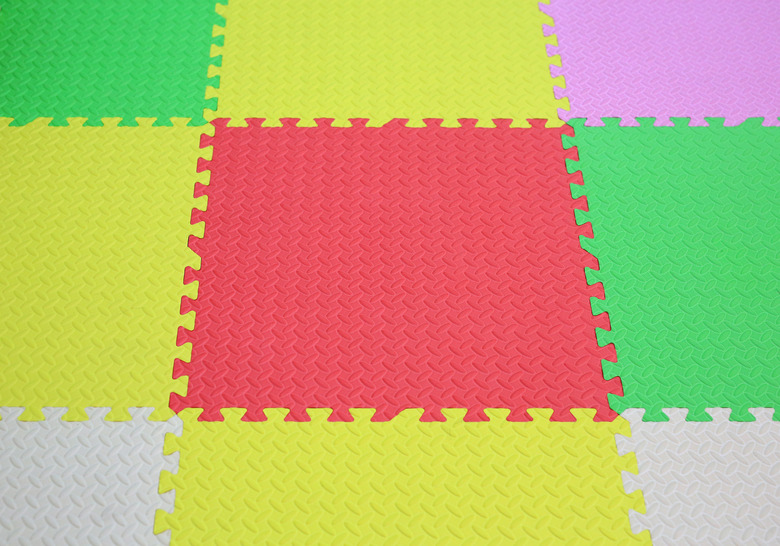Rubber Floor Tiles: A Homeowner's Flooring Guide
The first room that comes to mind when many people think of rubber flooring is their gym. It's popular in fitness centers for good reasons — it has a soft feel that's easy on joints while stretching or jumping, it's easy to clean after even the sweatiest exercisers and it doesn't dent when lifters drop their heavy weights. Rubber flooring also has a place in residential spaces, even in areas beyond home gyms or kids' playrooms. Discovering more about rubber flooring tile can help you realize that there might be a perfect spot for it in your home.
Advantages of Rubber Floor Tiles
Advantages of Rubber Floor Tiles
Depending on your home and your needs, rubber floor tiles could have many advantages.
- Durability: Rubber's super durability is one of its biggest advantages as a flooring option. Remember that this is a material that can hold up against tens of thousands of miles as tires, so it's much better at handling the things that life throws at it than more delicate floors such as hardwood.
- Low maintenance: It's easy to keep rubber clean. Depending on how much foot traffic it receives, a daily to weekly vacuum will pick up any dust or debris. About once a month, you can also give it a quick mop using a damp (never too wet) cloth or mop and a mild, pH-neutral cleaner. If you have a wet vac, it's also a good tool to periodically use on rubber.
- Softness: Some homeowners want a flooring option that's not too chilly or too hard to the barefoot touch, and rubber is a great option for that. This makes it popular among people who want a floor where they can drop heavy objects, like a home gym or yoga studio, or take a low-stakes fall, such as a kids' playroom.
- Recycled options: If you're looking for an environmentally conscious flooring solution, rubber may be suitable. Many brands sell rubber that has been reclaimed or recycled. Plus, if down the line you want to replace your rubber floors with different flooring products, there are many places you can bring your rubber so it can be recycled again. As Recycled Rubber Facts points out, rubber flooring (just like old tires) can then be repurposed for a variety of industries including medicine, agriculture and sports.
Disadvantages of Rubber Floor Tiles
Disadvantages of Rubber Floor Tiles
However, rubber floor tiles are not always the best solution. There are a number of situations where this eco-friendly option could be a miss.
- Slippery when wet: Rubber is not porous, which can be an advantage in flooring materials since porous stones or tiles can absorb dirt and moisture and lead to unwanted bacteria growth, mold and other concerns. However, it also means that water just sits on top of rubber, turning the surface slippery. It's easy to use a vacuum or towel to quickly dry those areas, but you may want to avoid it in areas where water can accumulate quickly, such as bathrooms or pool decks.
- Odor: When it is first installed, rubber has a distinctive odor that many people find unpleasant. This will go away over time and is much less distinct with most synthetic rubbers as opposed to natural rubber. Still, some homeowners prefer to completely avoid that smell upon installation.
- Moisture through seams: Rubber itself doesn't let moisture through to your subfloor, but if you have rubber flooring tiles with seams, it can be difficult to prevent moisture from slipping through those seams. This can cause damage to the surface below.
- Cost: Rubber can be an expensive flooring option depending on the type of rubber tiles you want. Good-quality tiles for homes typically start at $3 per square foot but can go as high as $15 per square foot, so it can sometimes cost more than some types of natural stones or hardwood. Rolled flooring can be cheaper, with quality rubber rolls going for $3 to $5 per square foot, though installation can take longer and requires more work, which increases installation costs. Including the cost of installation, poured rubber can be upward of $15 to $20 per square foot, which is one of the main reasons it is typically just found in commercial spaces.
Best Places for Rubber Floors
Best Places for Rubber Floors
There are several spots to consider rubber flooring in your home. Aside from a home gym or weight room, one of the most popular areas in which to use rubber is a bedroom or playroom for kids. Low-maintenance cleanup means you can wipe away their frequent spills, and rubber's softness is great for when they take a fall. Plus, since it comes in more vibrant colors and funky designs than many other traditional flooring options, you can create a floor that exudes brightness and fun.
When it's not wet, rubber is a surface that's super slip resistant, especially if you choose a brand with textured grips. This nonslip quality makes it great for areas where you're going out of your way to prevent falls, such as an old set of rickety stairs leading to a basement or the bedroom or living space of an older or accident-prone family member.
Rubber's elasticity also makes it excellent at absorbing sound. If you're an aspiring musician but have family members who prefer not to hear your rehearsals, a small room with rubber flooring could be a great practice space. Rubber tile flooring can also be great for home workshops, craft rooms or garages where you might be using noisy tools or tinkering with loud engines and want to mask some of the sound from the rest of the house and the neighbors.
Synthetic, Natural or Recycled?
Synthetic, Natural or Recycled?
Rubber flooring tiles are typically made from three types of rubber. The first is natural, or virgin rubber. As its name implies, it's made from 100 percent rubber that hasn't been previously recycled. Rubber floor can also be synthetic, typically made from petroleum. These are usually longer lasting than natural rubber and can have little to none of the rubbery odor that natural does at installation.
The third type of rubber is recycled, which has usually been made from discarded tires and can often be more durable than natural. It's the most environmentally conscious option among the types of rubber floors, and many U.S.-based manufacturers make it, which means you can often find it locally sourced. Occasionally, it's more porous than virgin or synthetic since it's a composition of materials, but many manufacturers often apply a sealant to prevent moisture buildup. This is often one of the more affordable options for rubber.
You can also find poured rubber, which is poured into a floor on-site. These have all the benefits of rubber but can give off a seamless, more upscale look and can feel harder to the touch. Due to a high cost of materials and installation, though, these are more often found in commercial spaces like indoor playgrounds.
Sizes of Rubber Flooring
Sizes of Rubber Flooring
Rubber flooring typically comes in squares of 12 x 12 inches, 18 x 18 inches or 36 x 36 inches, though unlike harder flooring, it's also easy to cut these to sizes that fit your specifications. These tiles are usually either squares with flat sides or interlocking rubber floor tiles, which have interlocking spokes or pins that link together and provide for easy installation. Old House Journal notes that interlocking tiles that look similar to puzzle pieces are a design and installation pattern that has been around since the late 1800s. Deciding which one is best for you depends mostly on personal preference.
You can also find rolled rubber flooring, also known as sheet rubber, which is rolled out during the installation as opposed to laid out as tiles. A rubber roll is often up to 30 feet long and 4 feet wide, though it can also be easily cut to meet the size of your room. People prefer rubber sheets if they dislike the seams that square and interlocking tiles have.
You'll also have to decide on the thickness of rubber flooring. Tiles are usually between 1/4- and 1/2-inch thick, which is usually all you need for residential flooring. Rubber flooring for outdoor spaces with lots of foot traffic or in busy gyms with an emphasis on weight training might be as much as 3 inches thick, but you don't normally need more than 1/2 inch for a small home gym or any other recreational uses.
Other Types of Rubber Flooring
Other Types of Rubber Flooring
Rubber comes in a wide variety of colors and textures. Many manufacturers offer bright or patterned rubber tiles designed for kids, and rubber with colorful, speckled flecks is especially popular in home gym flooring since that texture can make it more shock absorbent.
Some people consider rubber flooring and realize they want some of the benefits of rubber without installing a new floor. In situations like these, you might opt instead for a rubber floor mat. These are convenient for multipurpose areas, such as a part of the living room that sometimes acts as a kids' play area or a basement corner that is sometimes the home gym.
Because of its softness, rubber can have great anti-fatigue properties, especially in rubber matting specifically designed for this purpose. Rubber mats can be great to temporarily put down in areas where you have to stand for a long time, such as over the sink to wash dishes or in a craft room for certain types of art or tool work.
Rubber Tile Installation
Rubber Tile Installation
Rubber tile installation will vary based on the type of tiles or rolls that you buy, but in general, it can often be a relatively easy installation job. DIY enthusiasts could cut way down on installation costs by doing the job themselves, but rubber sheets often require the work of a professional.
The first important step when installing rubber tiles is to check the subfloor. If you have a subfloor that can't stand much moisture, you may need to install an underlayment that's moisture resistant before beginning the job. Once you have that, make sure the subfloor is completely clean and dry before laying the tile.
Then, lay out your tiles as you would like them to be arranged. This is especially important if you have tiles of different colors or patterns, as you want them to match your design tastes. You may need to trim the tiles to better fit your space, which can usually be done using a utility knife and a straightedge. Some rubber tiles come with corner or border tiles, while others simply come in one shape and size.
Rubber tiles occasionally require an adhesive to bond them to the floor, while others simply need double-sided tape and are sticky enough on the bottom to not require any additional bonding tool, or they rely on the interlocking mechanics to keep the tiles from moving. Depending on your type, you can lay the adhesive, put the tape on each tile as you go or simply interlock the tiles to finish the installation job. Rubber tile is usually ready to walk on right away, but always follow the manufacturer's instructions for the best guidelines throughout the installation.
References
- Recycled Rubber Facts: The Facts & Science on Recycled Rubber
- Rubber-Cal: Eco-Friendly Flooring
- BuildDirect: How to Clean Rubber Flooring
- Kiefer U.S.A.: Advantages of Rubber Flooring
- Old House Journal: Resilient Flooring for Old Houses
- Kiefer U.S.A.: How to Choose and Buy Rubber Flooring
- Rubber Flooring Inc.: How to Install Tiles



